Discover 7 hidden attractions, cool sights, and unusual things to do in Tresco (United Kingdom). Don't miss out on these must-see attractions: Tresco Priory, St Nicholas's Church, and Old Blockhouse. Also, be sure to include Tresco Abbey Gardens in your itinerary.
Below, you can find the list of the most amazing places you should visit in Tresco (England).
Table of Contents
Tresco Priory
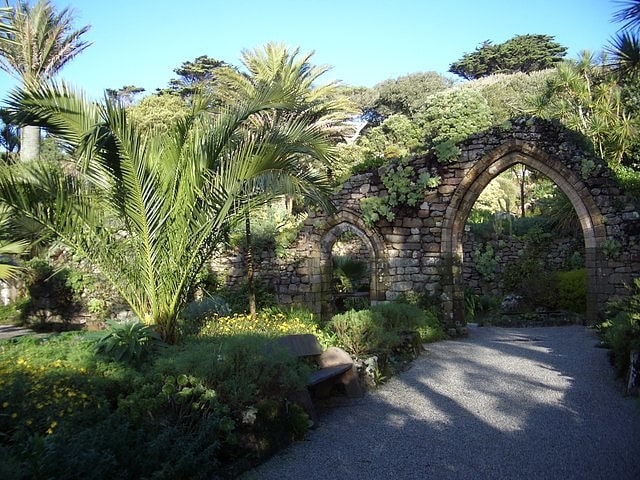
Tresco Priory is a former monastic settlement on Tresco, Isles of Scilly founded in 946 AD.
It was re-founded as the Priory of St Nicholas by monks from Tavistock Abbey in 1114. A charter of King Henry I mentions a priory as belonging to Tavistock Abbey in the reign of Edward the Confessor
Henry I, King of England, A.D. 1120, grants to William, Bishop of Exeter, and to Richard, son of Baldwin, and to his Justitiary of Devonshire and Cornwall in perpetual Alms to Osbert Abbat of Tavistock and Turold his monk, all the churches of Sully with the Appurtenances and the Land such as the Monks or Hermits held in the Time of King Edward and Burgal Bishop of Cornwall.
This was duly confirmed when Pope Celestine III by his Bull (dated 4 cal. June A.D. 1193) confirms to
Herbert Abbat of Tavistock and his successors the Islands of St Nicholas (Tresco), St. Sampson, St Elidius (St. Helens), St. Theona (Tean) and the Island called Nutho (possibly Nut Rock and land surrounding, where remains of hedges etc. between it and Sampson are still to be seen underwater) with their Appurtenances and all Churches and Oratories built throughout the Islands of Sully, with the Tenths and Offerings, etc. and two pieces of digg’d ground in the Island of Agnes, and three pieces in the Isle of Ennor (St. Mary’s).
In 1367 King Edward III took the Priory under his special protection as the monks had complained that it was almost destroyed and impoverished by mariners, and in 1351 pirates had destroyed most of the Abbey property.
The Priory did not survive the Dissolution of the Monasteries and may well have closed earlier. The remains of the priory are now incorporated into Tresco Abbey Gardens.[1]
Address: The Estate Office, Tresco Estate, Tresco
St Nicholas's Church
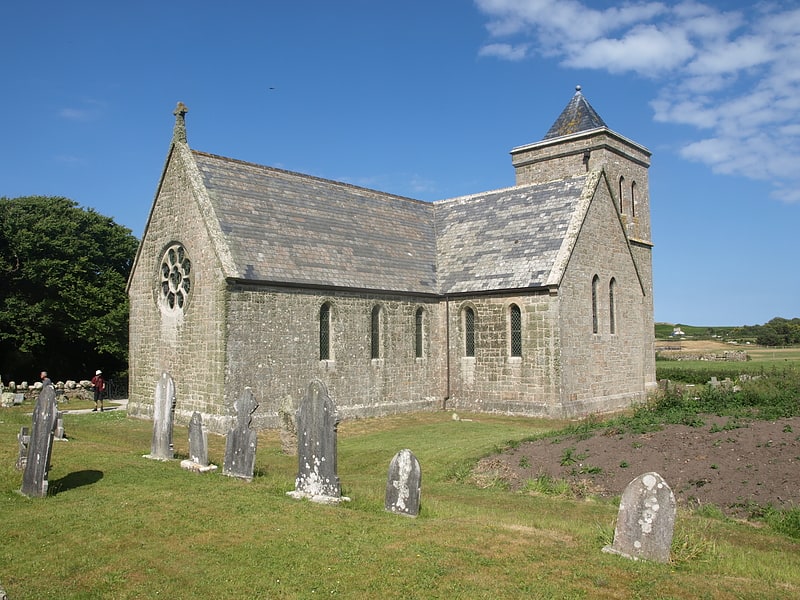
Anglican church in Tresco, England. St Nicholas's Church, Tresco, is a parish church in the Church of England located in Tresco, Isles of Scilly, UK.[2]
Old Blockhouse
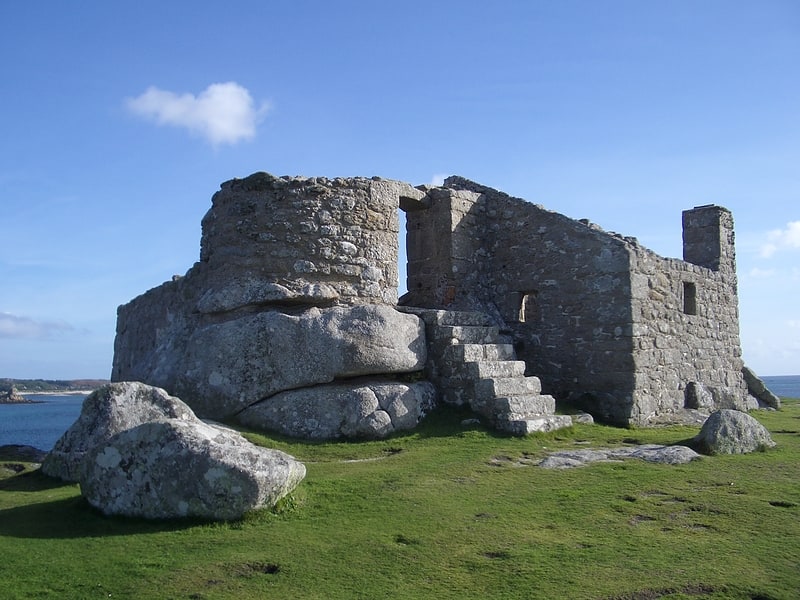
Historical landmark in England. The Old Blockhouse, also known as the Dover Fort, is a 16th-century fortification on the island of Tresco in the Isles of Scilly. It was built between 1548 and 1551 by the government of Edward VI to protect the islands against French attack.
Overlooking Old Grimsby harbour and the anchorage of St Helen's Pool, the blockhouse would have housed a battery of two or three artillery pieces, positioned on a square gun platform on top of a rocky outcrop. An earthwork bank and a stone wall were built to protect it from attack from the beach and the landward sides respectively. A small room to provide living quarters for the garrison was later constructed on the side of the gun platform.
During the interregnum following the English Civil War, the Old Blockhouse was occupied by the Royalists and it was attacked by the Parliamentary forces of Sir Robert Blake in 1651. Blake's naval guns out-ranged those of the fort, and, after fierce fighting, the blockhouse was taken. A battery of guns was maintained at the blockhouse until at least the 1750s, but by the end of the 18th century the fortification was disused and in ruins.
After 1922 the blockhouse was placed into the guardianship of the state by the lessee of the island, Arthur Dorrien-Smith, and in the 21st century it is controlled by English Heritage and open to tourists. It is protected as a scheduled monument under UK law.[3]
Address: Old Grimsby, Tresco
Tresco Abbey Gardens

Botanical garden in Tresco, England. Tresco Abbey Gardens are located on the island of Tresco in the Isles of Scilly, United Kingdom. The 17 acre gardens were established by the nineteenth-century proprietor of the islands, Augustus Smith, originally as a private garden within the grounds of the home he designed and built. The gardens are designated at Grade I in the Register of Historic Parks and Gardens.[4]
Address: Tresco, TR24 0QQ, Tresco
King Charles's Castle
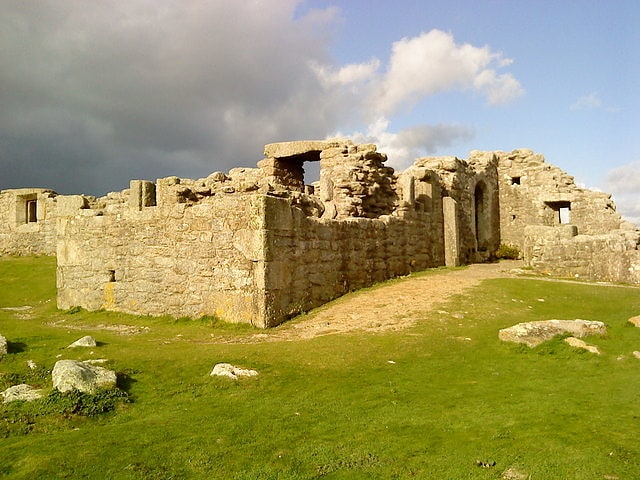
Castle in Tresco, England. King Charles's Castle is a ruined artillery fort overlooking New Grimsby harbour on the island of Tresco in the Isles of Scilly. Built between 1548 and 1551 to protect the islands from French attack, it would have held a battery of guns and an accompanying garrison, designed to prevent enemy vessels from entering the harbour. The castle is polygonal in design, constructed from granite stone, with the gun battery at the front, and a dining room, kitchen and living accommodation at the rear. An additional defensive earthwork was constructed around it during the 17th century. The design of the castle is unusual for the period, and is only seen elsewhere in blockhouses along the River Thames.
The castle's design was unsatisfactory, as its guns could not be angled so to fire down into the harbour, and its defences were considered vulnerable to attack. To mitigate this, an additional blockhouse was probably constructed below, closer to the water, but eventually a new fortification, the Star Castle, was built instead on the neighbouring island of St Mary's, which became the main fort in the Scilly Isles. In the aftermath of the English Civil War, the Scilly Isles were held by the Royalist sympathisers of King Charles I, who gave the castle its current name. The islands were then attacked by a Parliamentary force led by Sir Robert Blake in 1651, who landed on Tresco but bypassed the fort as he took the island. Its Royalist defenders blew up parts of the castle as they left, and some of its stone appears to have been used to build the newer Cromwell's Castle by the harbour.
Although King Charles's Castle was being used to house soldiers in 1660, by the 18th century it was described as ruinous. After 1922, the castle passed into the guardianship of the Ministry of Works, and archaeological excavations were carried out in 1954. In the 21st century the site is controlled by English Heritage and is open to visitors. It is protected under UK law as a scheduled monument and a Grade II* listed building.[5]
Oliver's Battery
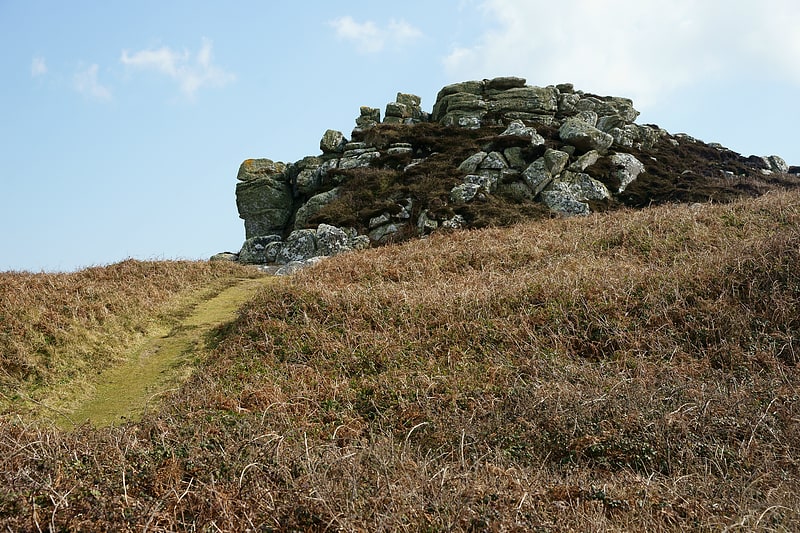
Ruin in England. Oliver's Battery is a ruined artillery battery on the island of Tresco in the Isles of Scilly off of Cornwall, England. It was built by the Parliamentarian admiral, Sir Robert Blake, after he invaded Tresco in April 1651 during the years of the interregnum. It was used to bombard the neighbouring island of St Mary's, which was still held by an opposing Royalist army, and forced its surrender several weeks later. The battery comprised a triangle of ramparts, constructed using earth and rubble, which, combined with the natural stone features on the site, produced a substantial, if crude, fortification. It is now ruined, and owned by the Duchy of Cornwall.[6]
Gallery Tresco
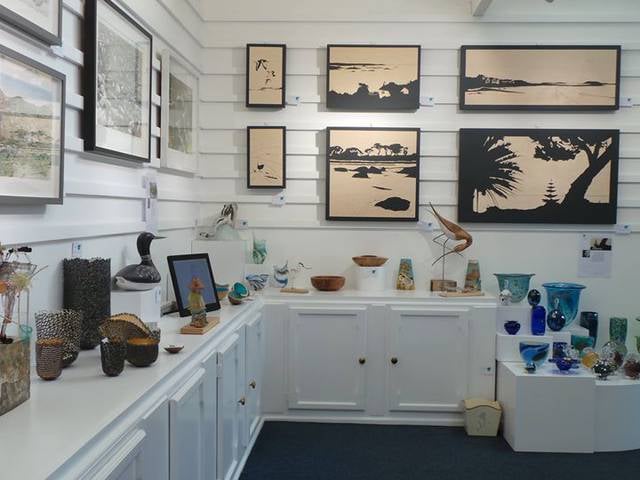
Museum
Address: New Grimsby - Tresco - Isles of Scilly, Tresco